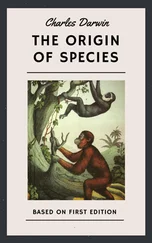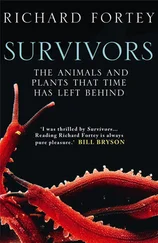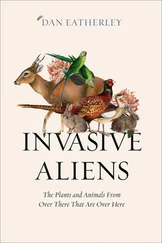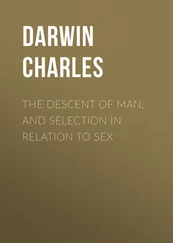Charles Darwin - The Variation of Animals and Plants under Domestication — Volume 2
Здесь есть возможность читать онлайн «Charles Darwin - The Variation of Animals and Plants under Domestication — Volume 2» — ознакомительный отрывок электронной книги совершенно бесплатно, а после прочтения отрывка купить полную версию. В некоторых случаях можно слушать аудио, скачать через торрент в формате fb2 и присутствует краткое содержание. Жанр: foreign_antique, foreign_prose, на английском языке. Описание произведения, (предисловие) а так же отзывы посетителей доступны на портале библиотеки ЛибКат.
- Название:The Variation of Animals and Plants under Domestication — Volume 2
- Автор:
- Жанр:
- Год:неизвестен
- ISBN:нет данных
- Рейтинг книги:3 / 5. Голосов: 1
-
Избранное:Добавить в избранное
- Отзывы:
-
Ваша оценка:
- 60
- 1
- 2
- 3
- 4
- 5
The Variation of Animals and Plants under Domestication — Volume 2: краткое содержание, описание и аннотация
Предлагаем к чтению аннотацию, описание, краткое содержание или предисловие (зависит от того, что написал сам автор книги «The Variation of Animals and Plants under Domestication — Volume 2»). Если вы не нашли необходимую информацию о книге — напишите в комментариях, мы постараемся отыскать её.
The Variation of Animals and Plants under Domestication — Volume 2 — читать онлайн ознакомительный отрывок
Ниже представлен текст книги, разбитый по страницам. Система сохранения места последней прочитанной страницы, позволяет с удобством читать онлайн бесплатно книгу «The Variation of Animals and Plants under Domestication — Volume 2», без необходимости каждый раз заново искать на чём Вы остановились. Поставьте закладку, и сможете в любой момент перейти на страницу, на которой закончили чтение.
Интервал:
Закладка:
I have been informed by Mr. B.P. Brent, that he crossed a white Aylesbury drake and a black so-called Labrador duck, both of which are true breeds, and he obtained a young drake closely like the mallard (A. boschas). Of the musk- duck (Cairina moschata, Linn.) there are two sub-breeds, namely, white and slate-coloured; and these I am informed breed true, or nearly true. But the Rev. W.D. Fox tells me that, by putting a white drake to a slate-coloured duck, black birds, pied with white, like the wild musk-duck, were always produced. I hear from Mr. Blyth that hybrids from the canary and gold-finch almost always have streaked feathers on their backs; and this streaking must be derived from the original wild canary.
We have seen in the fourth chapter, that the so-called Himalayan rabbit, with its snow-white body, black ears, nose, tail, and feet, breeds perfectly true. This race is known to have been formed by the union of two varieties of silver-grey rabbits. Now, when a Himalayan doe was crossed by a sandy-coloured buck, a silver-grey rabbit was produced; and this is evidently a case of reversion to one of the parent varieties. The young of the Himalayan rabbit are born snow-white, and the dark marks do not appear until some time subsequently; but occasionally young Himalayan rabbits are born of a light silver-grey, which colour soon disappears; so that here we have a trace of reversion, during an early period of life, to the parent varieties, independently of any recent cross.
In the third chapter it was shown that at an ancient period some breeds of cattle in the wilder parts of Britain were white with dark ears, and that the cattle now kept half wild in certain parks, and those which have run quite wild in two distant parts of the world, are likewise thus coloured. Now, an experienced breeder, Mr. J. Beasley, of Northamptonshire (13/28. 'Gardener's Chronicle and Agricultural Gazette' 1866 page 528.), crossed some carefully selected West Highland cows with purely-bred shorthorn bulls. The bulls were red, red and white, or dark roan; and the Highland cows were all of a red colour, inclining to a light or yellow shade. But a considerable number of the offspring — and Mr. Beasley calls attention to this as a remarkable fact — were white, or white with red ears. Bearing in mind that none of the parents were white, and that they were purely-bred animals, it is highly probable that here the offspring reverted, in consequence of the cross, to the colour of some ancient and half-wild parent-breed. The following case, perhaps, comes under the same head: cows in their natural state have their udders but little developed, and do not yield nearly so much milk as our domesticated animals. Now there is some reason to believe (13/29. Ibid 1860 page 343. I am glad to find that so experienced a breeder of cattle as Mr. Willoughby Wood, 'Gardener's Chronicle' 1869 page 1216, admits my principle of a cross giving a tendency to reversion.) that cross-bred animals between two kinds, both of which are good milkers, such as Alderneys and Shorthorns, often turn out worthless in this respect.
In the chapter on the Horse reasons were assigned for believing that the primitive stock was striped and dun-coloured; and details were given, showing that in all parts of the world stripes of a dark colour frequently appear along the spine, across the legs, and on the shoulders, where they are occasionally double or treble, and even sometimes on the face and body of horses of all breeds and of all colours. But the stripes appear most frequently on the various kinds of duns. In foals they are sometimes plainly seen, and subsequently disappear. The dun-colour and the stripes are strongly transmitted when a horse thus characterised is crossed with any other; but I was not able to prove that striped duns are generally produced from the crossing of two distinct breeds, neither of which are duns, though this does sometimes occur.
The legs of the ass are often striped, and this may be considered as a reversion to the wild parent form, the Equus taeniopus of Abyssinia (13/30. Sclater in 'Proc. Zoolog. Soc.' 1862 page 163.), which is generally thus striped. In the domestic animal the stripes on the shoulder are occasionally double, or forked at the extremity, as in certain zebrine species. There is reason to believe that the foal is more frequently striped on the legs than the adult animal. As with the horse, I have not acquired any distinct evidence that the crossing of differently-coloured varieties of the ass brings out the stripes.
But now let us turn to the result of crossing the horse and ass. Although mules are not nearly so numerous in England as asses, I have seen a much greater number with striped legs, and with the stripes far more conspicuous than in either parent-form. Such mules are generally light-coloured, and might be called fallow-duns. The shoulder-stripe in one instance was deeply forked at the extremity, and in another instance was double, though united in the middle. Mr. Martin gives a figure of a Spanish mule with strong zebra-like marks on its legs (13/31. 'History of the Horse' page 212.), and remarks that mules are particularly liable to be thus striped on their legs. In South America, according to Roulin (13/32. 'Mem. presentes par divers Savans a l'Acad. Royale' tome 6 1835 page 338.), such stripes are more frequent and conspicuous in the mule than in the ass. In the United States, Mr. Gosse (13/33. 'Letters from Alabama' 1859 page 280.), speaking of these animals, says, "that in a great number, perhaps in nine out of every ten, the legs are banded with transverse dark stripes."
Many years ago I saw in the Zoological Gardens a curious triple hybrid, from a bay mare, by a hybrid from a male ass and female zebra. This animal when old had hardly any stripes; but I was assured by the superintendent, that when young it had shoulder-stripes, and faint stripes on its flanks and legs. I mention this case more especially as an instance of the stripes being much plainer during youth than in old age.
As the zebra has such a conspicuously striped body and legs, it might have been expected that the hybrids from this animal and the common ass would have had their legs in some degree striped; but it appears from the figures given in Dr. Gray's 'Knowsley Gleanings' and still more plainly from that given by Geoffroy and F. Cuvier (13/34. 'Hist. Nat. des Mammiferes' 1820 tome 1), that the legs are much more conspicuously striped than the rest of the body; and this fact is intelligible only on the belief that the ass aids in giving, through the power of reversion, this character to its hybrid offspring.
The quagga is banded over the whole front part of its body like a zebra, but has no stripes on its legs, or mere traces of them. But in the famous hybrid bred by Lord Morton (13/35. 'Philosoph. Transact.' 1821 page 20.) from a chestnut, nearly purely-bred, Arabian mare, by a male quagga, the stripes were "more strongly defined and darker than those on the legs of "the quagga." The mare was subsequently put to a black Arabian horse, and bore two colts, both of which, as formerly stated, were plainly striped on the legs, and one of them likewise had stripes on the neck and body.
The Equus indicus (13/36. Sclater in 'Proc. Zoolog. Soc.' 1862 page 163: this species is the Ghor-Khur of N.W. India, and has often been called the Hemionus of Pallas. See also Mr. Blyth's excellent paper in 'Journal of Asiatic Soc. of Bengal' volume 28 1860 page 229.) is characterised by a spinal stripe, without shoulder or leg stripes; but traces of these latter stripes may occasionally be seen even in the adult (13/37. Another species of wild ass, the true E. hemionus or Kiang, which ordinarily has no shoulder-stripes, is said occasionally to have them; and these, as with the horse and ass, are sometimes double: see Mr. Blyth in the paper just quoted and in 'Indian Sporting Review' 1856 page 320: and Col. Hamilton Smith in 'Nat. Library, Horses' page 318; and 'Dict. Class. d'Hist. Nat.' tome 3 page 563.) and Colonel S. Poole, who has had ample opportunities for observation, informs me that in the foal, when first born, the head and legs are often striped, but the shoulder-stripe is not so distinct as in the domestic ass; all these stripes, excepting that along the spine, soon disappear. Now a hybrid, raised at Knowsley (13/38. Figured in the 'Gleanings from the Knowsley Menageries' by Dr. J.E. Gray.) from a female of this species by a male domestic ass, had all four legs transversely and conspicuously striped, had three short stripes on each shoulder and had even some zebra-like stripes on its face! Dr. Gray informs me that he has seen a second hybrid of the same parentage, similarly striped.
Читать дальшеИнтервал:
Закладка:
Похожие книги на «The Variation of Animals and Plants under Domestication — Volume 2»
Представляем Вашему вниманию похожие книги на «The Variation of Animals and Plants under Domestication — Volume 2» списком для выбора. Мы отобрали схожую по названию и смыслу литературу в надежде предоставить читателям больше вариантов отыскать новые, интересные, ещё непрочитанные произведения.
Обсуждение, отзывы о книге «The Variation of Animals and Plants under Domestication — Volume 2» и просто собственные мнения читателей. Оставьте ваши комментарии, напишите, что Вы думаете о произведении, его смысле или главных героях. Укажите что конкретно понравилось, а что нет, и почему Вы так считаете.












